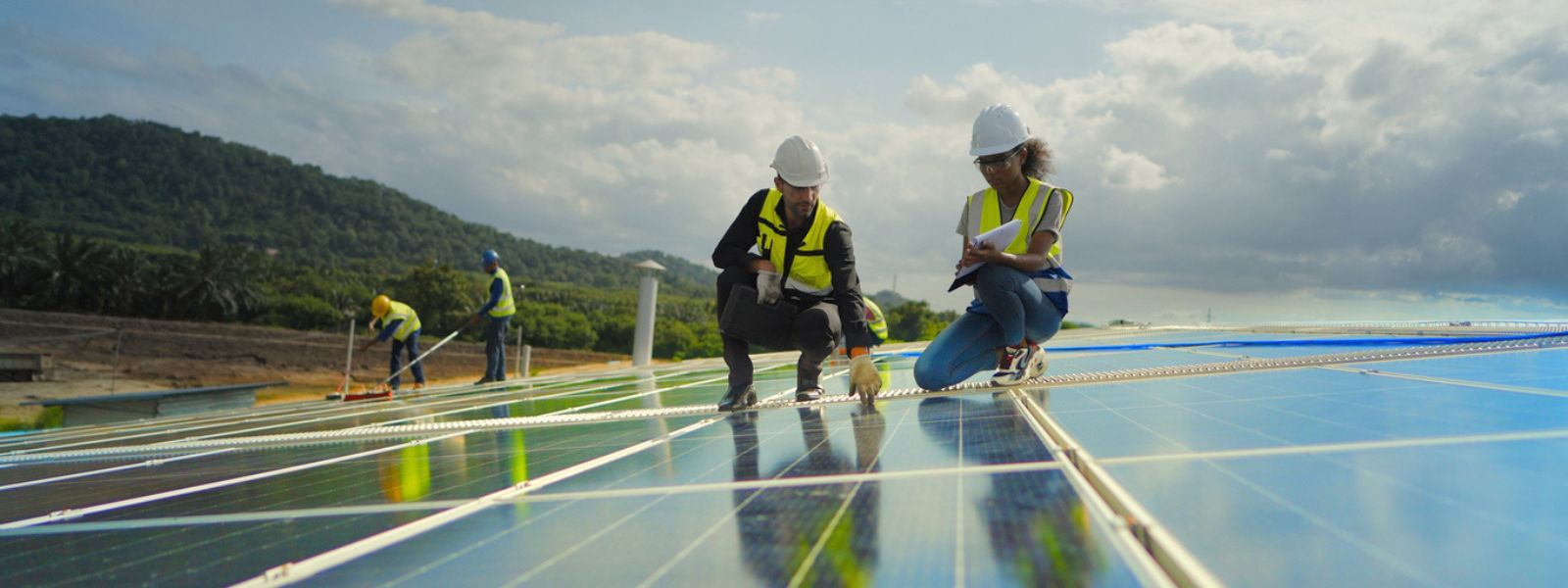The Canadian Climate Institute recently testified to the House of Commons Natural Resources Committee. The Committee’s work is currently focused on assessing Canada’s competitiveness within the context of the global clean energy transition, and our research on the subject sheds some light on the threats and opportunities Canada will face as that transition accelerates.
My remarks focused on four policy insights from the Canadian Climate Institute’s research. Together, they provide a roadmap for keeping Canada’s economy competitive and resilient as the world shifts toward a net zero future.
1. Moving too slowly is a bigger risk than moving too quickly in the race to net zero.
Over 70 countries have now committed to net zero by mid century. That covers over 90 per cent of global economic activity, 80 per cent of global oil demand, and 75 per cent of global fossil gas demand.
In financial markets, international investors managing over $61 trillion in assets have committed to net zero. At the same time, demand for the technologies that will drive this transition—particularly solar panels, heat pumps, wind turbines, and batteries—is growing rapidly as their prices continue to fall.
These trends have flipped the script for Canada’s long-term competitiveness: as the transition accelerates, Canada faces an existential sink-or-swim challenge. Moving too slowly is now a greater competitive risk than moving too quickly.
2. The U.S. Inflation Reduction Act is a major accelerator of this transition, but Canada doesn’t need to copy it to compete in the global low-carbon economy.
The Inflation Reduction Act and the investments it unlocks have slammed the accelerator to the floor on the global energy transition—directly affecting international investment choices and competitiveness. But its scale and magnitude make it impractical for Canada to emulate directly.
Canada’s advantage is a portfolio of policy tools, including the targeted investment tax credits announced this year, as well as maintaining and strengthening regulatory and pricing policies.
In particular, Canada’s carbon pricing framework improves the economics of low-carbon projects and is a powerful draw for investment. Carbon pricing is also cost-effective, with low fiscal costs.
But businesses and investors need certainty that the carbon price will continue to rise over time and that carbon credits will continue to have market value in order to build at the pace the transition requires. Carbon contracts for differences can provide this certainty, and implementing this proposed policy needs to be a priority for the federal government.
Governments can also give businesses and investors more certainty by backing the creation of a climate investment taxonomy, which provides a common language around the investments that align with the global energy transition. Canada is one of few G20 countries that doesn’t already have a taxonomy. The framework proposed by the Sustainable Finance Action Council and the Canadian Climate Institute would catch Canada up and could even make it a leader in this field.
3. Clean electricity is a huge asset for Canada in the competition for global capital.
The availability of clean, affordable electricity is now affecting company decisions about where projects get built. Canada already has a clear head start, with over 80 per cent of the country’s electricity produced with zero emissions.
Yet Canada’s electricity systems must keep pace with demand, which could double or triple by 2050.
The scale of that change requires unprecedented policy action. Moving ahead with the federal government’s Clean Electricity Regulations is critical to creating bigger, cleaner, and smarter electricity systems. And the proposed $25 billion in federal investment tax credits can help accelerate private sector investment toward this goal.
Provinces and territories also need to play a more active role in accelerating the build-out of clean electricity to ensure that Canadian clean electricity remains the backbone of a competitive net zero economy. And the federal government can help mobilize provinces and territories toward this goal.
Doing so will mean that total energy costs for Canadians will decrease in the transition, as more people make the switch from dirty and price-volatile fossil fuels to more efficient electric technologies like heat pumps and electric vehicles.
4. Canada’s oil and gas sector faces unique challenges in the global energy transition, but public policy can play an important role to reduce risks.
The long-term decline in global demand for fossil fuels creates a dual challenge for Canada.
First, the sector must reduce emissions to stay competitive in a market that will put a premium on low-carbon barrels. Canadian oil and gas producers are some of the most carbon intensive in the world, and emissions from the sector continue to grow, pushing the country as a whole off-course from reaching our emissions-reduction targets. Addressing this challenge will require large-scale investments from oil and gas companies to meet their own climate commitments.
The second part of this challenge pulls in the opposite direction. Declining global fossil fuel demand will undermine the sector’s long-term economic viability and make the necessary investments in reducing upstream emissions from the sector more challenging. These global shifts will increase risks to Canadian workers, communities, and governments.
With the right policy package, however, the federal government can support both short- and medium-term competitiveness in the oil and gas sector:
- Capping oil and gas emissions can help guarantee that sectoral emissions decrease over time.
- Moving ahead with stronger methane regulations can deliver an estimated one-third of the emissions under a federal cap, and can do so cost-effectively.
- The proposed Investment Tax Credits for technologies like carbon capture and storage, as well as carbon contracts for differences, can de-risk low-carbon projects.
- Finally, a government-backed climate investment taxonomy can help scale private investments in reducing emissions from hard-to-decarbonize sectors.
Setting Canada up for success in a clean energy economy
Canada has made immense progress on multiple fronts in the fight against climate change, with key policies moving from ideas to specific commitments. The challenge, and arguably the hardest part, is to finalize each of the keystone policies—and quickly.
Investors and companies need bankable policies to move ahead before making big bets on a low-carbon economy. Whether it’s the Clean Electricity Regulations, investment tax credits, the oil and gas emissions cap, or a climate investment taxonomy, rapidly implementing each of these policies will determine whether Canada’s economy can keep up with the massive structural changes in global markets that are already underway. Strong, ambitious climate policies are the seeds of Canada’s future competitiveness and prosperity.







